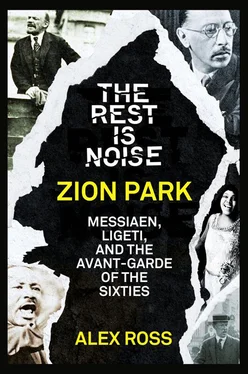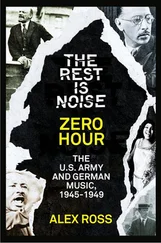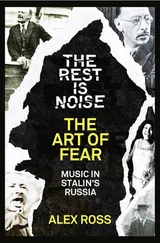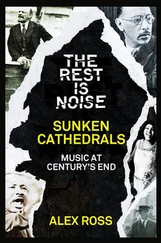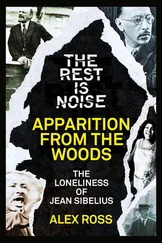For the last three decades of his life, Messiaen lived with his second wife, the pianist Yvonne Loriod, in an old building in the eighteenth arrondissement of Paris, in the area of Montmartre. As Peter Hill and Nigel Simeone report in their biography of the composer, the accommodations were fairly spartan, with one communal bathroom on each floor of the building. The main living quarters were decorated in devout Catholic style, plastic crucifixes all around. When the composer and conductor Esa-Pekka Salonen called on Messiaen, he looked to see what books and records were on the shelves, but could find only a copy of the Bible and various recordings of Messiaen’s own works.
No one reported anything like a seamy underside to the composer’s personality. The conductor Kent Nagano, who collaborated closely with Messiaen in his last years, was once pressed to tell some unflattering or otherwise revealing anecdote about his mentor, and all he had to offer was a story about how Messiaen and Loriod had once devoured an entire pear tart at one sitting.
God spoke to Messiaen through sounding tones, whether the mighty roar of the orchestra or the church organ, the clattering of exotic percussion, or the songs of birds. The Lord could manifest Himself in consonance and dissonance alike, though consonance was His true realm.
“The tonic triad, the dominant, the ninth chord are not theories but phenomena that manifest themselves spontaneously around us and that we cannot deny,” Messiaen once said. “Resonance will exist as long as we have ears to listen to what surrounds us.” He had in mind the fact that the major triad, on which tonality rests, is related to the lower intervals of the natural harmonic series, those that arise from any resonating string. Schoenberg, in his Harmonielehre , proposed to set aside consonances and to derive new chords from what he called “remote overtones.” Messiaen believed that the ear could, and should, take in tones both near and remote—both the reassuring resonances of fundamental intervals and the obscure relationships among the higher tones.
In his 1944 textbook Technique of My Musical Language , Messiaen notated what he called “the chord of resonance,” in which eight distinct pitches from the natural harmonic series sound together (C, E, G, B-flat, D, F-sharp, G-sharp, B-natural). Strongly dissonant in effect, it still has the C-major triad at its base—a “natural” foundation for an abstract form. Mahler placed a chord very much like this one at the roaring climaxes of his unfinished Tenth Symphony.
Technique of My Musical Language also set out a system of “modes of limited transpositions,” analogous to the modes of ancient Greek music (Aeolian, Dorian, Lydian, and so on). They are based on the composer’s study of early-twentieth-century music, especially Stravinsky and Bartók, as well as of folk and traditional music from Bali, India, Japan, and the Andes. The first mode is Debussy’s whole-tone scale. Mode 2, made up of alternating semitones and whole tones, is the octatonic scale, on which Stravinsky built the Rite . Mode 3, in which one whole tone alternates with two semitones, slightly resembles the scale commonly associated with the blues. Mode 6 happens to be the same as the slithering clarinet scale that begins Salome . The three remaining modes are more eccentric scales of Messiaen’s devising. What they have in common is that they are symmetrical in shape, dividing neatly along the fault line of the tritone. The diabolus in musica sounded divine to Messiaen’s ears; it was the axis around which his harmony rotated. Messiaen’s modes generate a fabulous profusion of major and minor triads, as Paul Griffiths points out in his study of the composer. But they do not—indeed, cannot—produce standard chord progressions of the kind that are found in hymnals. Instead, the harmony skids from one triad to another, following the sinuous contours of the modes. Messiaen called these effects “rainbows of chords.”
The Technique might be read as Messiaen’s answer to—and refutation of— Harmonielehre . Schoenberg, too, considered his harmonies emblems of the sacred; the wordless six-note chords in Moses und Aron , mimicking the voice of the burning bush, tremble with divine force. The difference between Schoenberg and Messiaen is ultimately theological. Schoenberg believed that God was unrepresentable, that His presence could be indicated only by placing a taboo on the familiar. Messiaen felt that God was present everywhere and in all sound. Therefore, there was no need for the new to supersede the old: God’s creation gathered magnificence as it opened up in space and time.
Messiaen rejected the stereo type of French music as a poised, graceful, self-limiting art. From an early age, he favored the lavish, the opulent, the unashamedly grand. His 1932 organ piece Apparition of the Eternal Church intersperses velvety modal harmonies with pillar-like open fifths that the composer called “simple, almost brutal.” There is an atmosphere of gradual ritual, incense, rustling robes, flickering candles in a shadowy space—a church of the mind as real as the one in which the listener is presumed to be seated.
While Messiaen took on a markedly more aggressive, even at times abrasive voice in the Quartet for the End of Time , he did not lose his flair for the simple, astounding gesture. The two most excruciatingly beautiful movements of the Quartet —the two “Louanges,” or hymns of praise, to the eternity and immortality of Jesus—are in fact adaptations of pieces that he had written before the war. The first “Louange” is based on Fêtes des belles eaux , or Festival of Beautiful Waters , a work for six ondes Martenot (an early electronic instrument akin to the Theremin). The second comes from the 1930 organ piece Diptyque . Curiously, Fêtes was written in 1937 for a “festival of sound, water, and light” along the banks of the river Seine. Women in white dresses played Messiaen’s music in conjunction with fireworks and fountains; the formal divisions of the piece were dictated by the requirements of the engineers. The first long, slow, searching phrase, which the cello plays in the Quartet , originally accompanied a tall jet of water, which, Messiaen said, was a “symbol of Grace and Eternity.”
To know that such a spectacle lies behind the “Praise to the Eternity of Jesus” is to appreciate the many-sidedness of the composer’s aesthetic, his ability to move in a flash from the mundane to the sublime. Messiaen expects paradise not just in a single awesome hereafter but also in the scattered ecstasies of daily life. In the end, his apocalypse—“There shall be time no longer”—may have nothing to do with the catastrophic circumstances under which it was conceived. Instead, it may describe the death and rebirth of a single soul in the grip of exceptional emotion.
Messiaen’s early sacred pieces, the Quartet included, are like Christian surrealism. They have something in common with those later paintings of Salvador Dalí in which Christ floats above the earth like an astronaut or superhero. That image applies especially to the composer’s next big works, Visions of the Amen for two pianos and Three Small Liturgies of the Divine Presence for chorus and instrumental ensemble, both written while the Germans still occupied France. The Visions indulges in what Paul Griffiths calls “ever splashier paroxysms of cheapened harmony .. . a further stage in Messiaen’s abjuring of a sophisticated response to what is musically embarrassing.” The text of the Liturgies scandalously intermingles sacred and erotic phrases, some culled from religious literature and some coined by the composer, all in the form of a love letter to God (“You are so complex and so simple, you are infinitely simple”). The harmony is plush and the orchestration picturesque, reminiscent in passing moments of the swashbuckling film scores of Erich Wolfgang Korngold and Max Steiner. Wailing in the middle of the ensemble are the sci-fi-ish tones of the ondes Martenot. Some critics balked—one compared the Three Small Liturgies to “an angel wearing lipstick”—but audiences cheered. Messiaen had the ability, Virgil Thomson noted, “to open up the heavens and to bring down the house.”
Читать дальше
